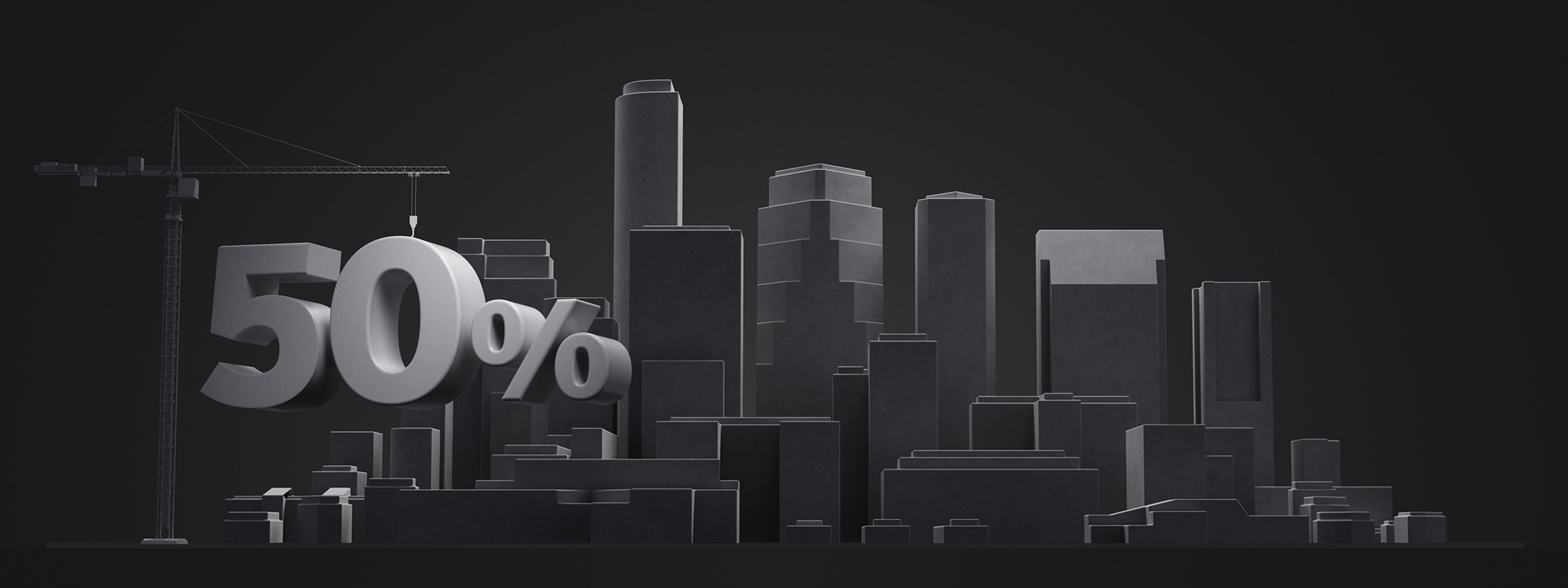Roughly half of the natural resources used globally are consumed by the construction industry. In a world where buildings account for almost 40% of all greenhouse gas emissions, there's a readily available way to reduce the carbon footprint of the construction industry: increasing the use of wood.
Limited natural resources, biodiversity loss and climate change are urging societies to move toward sustainable solutions. The construction industry is no exception to the changes, and therefore it needs to find new solutions and re-engineer its practices.
Solutions from Nordic forests
Dependency from fossil materials can be reduced by using materials more efficiently and building more with wood. This has many benefits, as wooden elements are for example reusable, they lower carbon emissions and require a smaller amount of building materials. All the wood used by Metsä Wood is traceable and comes from certified or controlled forests. As the trees grow, they absorb carbon dioxide from the atmosphere and store carbon. After a tree has been harvested, four new seedlings are planted to create carbon sinks of the future. The carbon stored in the tree then remains locked when the wood material stays in use. Once the material is disposed after being reused, the stored carbon is released back to the atmosphere, where it is absorbed again by trees through photosynthesis.
“Wood is a low-emission material that allows us to contribute to the sustainability goals of the construction industry. It is important to use wood material where it is best suited. All building materials have their strengths, but increasing the use of wood plays an important role in mitigating climate change,” says Henrik Söderström, SVP, Sales and Marketing from Metsä Wood.
The best results are reached when all building materials are used together. Often solutions combine different materials and their strengths. Wood products can well be used alongside other materials.
Wood materials accelerate sustainable solutions
Wood is a renewable material that creates less emissions when produced compared to other materials such as concrete or steel. Modern wood products such as Kerto® LVL are light, material-efficient and able to streamline construction.
In addition to the material-efficiency of Kerto LVL products themselves, they are well suited for hollow yet strong element structures. Using Kerto LVL in elements offers the possibility to save 50% in material usage. Kerto LVL based elements are thinner, improve spatial efficiency and architectural flexibility. With correct design buildings built with Kerto LVL elements can be relocated and serve another purpose after their initial use.
“One great example of the reuse is Östermalmshallen in Sweden. The complete roof structure was built with Kerto LVL with circularity in mind, and after serving a few years as a market hall, the building was transported 500 km from Stockholm to Göteborg. There it was rebuilt to be a padel hall. This is true proof of how Kerto LVL combined with proactive design enables high circular economy value in construction,” Söderström continues.
Read more
Media files

For more information, please contact:
Henni Rousu, Marketing Director, Metsä Wood
tel. +358 40 554 8388, henni.rousu@metsagroup.com
Subscribe to our news
Fill in the formLatest news
-
Verified study shows that Kerto LVL can reduce carbon footprint of construction
Releases – 11.06.2025 -
Prefabricated wooden elements are cost-efficient and streamline the whole construction process
Releases – 15.05.2025 -
Metsä Group will build a Research and Development laboratory for veneer-based wood products
Releases – 29.04.2025